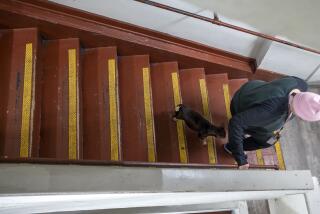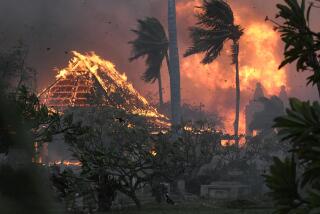Victims of â86 Flood Finally Get Payday
A Yuba County judge has approved a $428-million settlement, ending a 19-year battle between the state and thousands of property owners whose homes and businesses were damaged or destroyed in a massive flood.
The payment will be shared among some 3,000 plaintiffs, many from the towns of Olivehurst and Linda, about 40 miles north of Sacramento. Following record rainfall in February 1986, a break in the levee on the Yuba River sent a wall of water crashing through about 7,000 acres.
Plaintiffs said Wednesday that justice had finally been served, despite the wait.
âItâs been a long time coming, but weâre thrilled,â said Mariel Paterno, 70, whose husband, Peter Paterno, 73, was the lead plaintiff.
David Collins, the lead appellate attorney for the plaintiffs, said the compensation sum -- approved by a judge Monday -- was fair given the magnitude of the losses suffered by the plaintiffs and the length of time seeking justice.
Collins noted that as many as 400 of the original plaintiffs, and three lawyers on the case, had died during the course of the protracted legal battle.
âWeâve lost colleagues, weâve lost clients and the bureaucracy has gone on and on,â Collins said.
Thousands of residents were forced to flee. Estimates of damage ranged from $50 million to $100 million.
The ruling was significant, Collins said, because âit establishes once and for all, beyond any doubt, that [the levee] is the state of Californiaâs project and the state bears responsibility as a point of constitutional law.â
It also shows âthat if you believe in yourself and you keep fighting, you can accomplish justice,â he added.
H.D. Palmer, a spokesman for the California Department of Finance, said the investment banking firm of Merrill Lynch & Co. would pay the plaintiffs the $428 million.
The state would then pay Merrill Lynch the judgment amount, plus interest, over a 10-year period.
Such an agreement would allow the plaintiffs to be paid immediately and ease the burden to the state of having to shell out a huge lump sum at a time of fiscal constraints, Palmer said.
Lawyers for the plaintiffs argued that the levee was not structurally sound and was prone to seepage.
Residents won a 1991 lawsuit, but it was reversed on appeal and ordered retried.
In November 2003, a California appeals court ruled that the state was liable for damage. The state Supreme Court declined to overturn this judgment.
The state had denied responsibility for the structural defects in the levee, the foundation of which was built by local agriculture interests in the 1930s.
But the appeals court said that when a public entity operates a flood-control system built by another interest, it accepts liability as if it had built the system itself, officials at the Department of Finance explained.
The court also stated in its opinion that the state had erred when it âaccepted the levee as built, without any measures to ensure it met design standards.â
Collins said it was âunfortunateâ and âinexplicableâ that the appellate court took so long to try the case and granted an inordinately long extension to the attorney generalâs office to file its brief.
Paterno said she and her husband built their three-bedroom, two-bathroom dream home in 1957 on a peach orchard. When the floods came, the house was submerged in up to 9 feet of water.
âThe swimming pool was completely mud, and the only piece of furniture we could salvage was a wooden plant stand,â Paterno said. âAnd then we even had to throw that away.â
They were forced to have the structure razed and rebuilt.
Now, however, she is looking forward to putting the memory of those tragic days behind her.
âJustice long delayed finally has been done,â Collins said.
More to Read
Sign up for Essential California
The most important California stories and recommendations in your inbox every morning.
You may occasionally receive promotional content from the Los Angeles Times.











